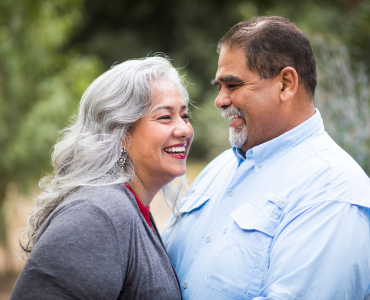
According to the Centers for Disease Control and Prevention (CDC), about 38 million Americans have diabetes. Which comes out to about 1 in 10 people. Out of those 38 million people, about 95% of them have type 2 diabetes. Type 2 diabetes is a condition that affects how your body processes blood sugar (glucose). Unlike type 1 diabetes, which is caused by your immune system attacking the pancreas. Type 1 can happen regardless of your health and lifestyle. Whereas type 2 diabetes typically is often connected with your lifestyle. Take a look at what causes it, how to spot it, and how to manage it, according to the Mayo Clinic.
What Causes Type 2 Diabetes?
Type 2 diabetes happens when your cells don't use insulin properly. This causes sugar buildup. Along with your pancreas not making enough insulin. Meaning you cannot control blood sugar levels. Exactly why this happens is not fully known. However, some factors do add to your chances of getting type 2 diabetes.
- Obesity: Carrying excess weight. Extra weight around your waist adds to your risk. Fat cells around the waist release chemicals. These chemicals can mess with your body's ability to regulate blood sugar.
- Inactivity: Physical inactivity can lead to weight gain. Regular exercise helps your body use insulin more effectively. As well as can also lower your blood sugar levels.
- Unhealthy Diet: Eating a diet high in processed foods, sugary drinks, and refined carbs can add to insulin resistance. Try to eat a healthier diet. Make sure it is rich in fruits, vegetables, whole grains, and lean proteins.
- Genetics: If you have a family history of the condition, you may be at higher risk.
- Age: After the age of 35 your risk of type 2 diabetes grows. This is due to changes in hormone levels. Along with lowered muscle mass. All of this can affect how your body uses insulin.
How to Spot Type 2 Diabetes
Common signs and symptoms:
- Frequent Urination: Excess sugar in the blood can cause your kidneys to work harder to filter sugar. This leads to more frequent urination.
- Thirst: Urinating a lot can lead to dehydration. This causes you to feel thirsty more often.
- Fatigue: When your cells aren't getting enough sugar for energy, you may feel more tired.
- Blurred Vision: High blood sugar levels can cause fluid to be pulled from the lenses of your eyes. When this happens it affects your eyes’ ability to focus.
If you have any of these symptoms go see your doctor. Early detection and treatment can improve your quality of life.
Ways to Manage Type 2 Diabetes
Managing type 2 diabetes means making healthy lifestyle choices. Along with working with your doctor to make a treatment plan. Here are some tips that can help:
- Healthy Eating: Focus on eating a balanced diet. Make sure it includes fruits, veggies, whole grains, and lean proteins. Limit sugary foods, beverages, refined carbs, and unhealthy fats.
- Regular Exercise: Aim for at least 30 minutes of exercise most days of the week. This can help lower your blood sugar levels. It also helps improve insulin sensitivity. Thus helping you keep a healthy weight.
- Monitoring Blood Sugar: Check your blood sugar levels regularly. This can help you track how your choices and medications are affecting your blood sugar levels.
- Stress Management: Stress can raise blood sugar levels. Find healthy ways to cope with stress. Try things like exercise, hobbies, or therapy.
Visit Clinicas
Take care of your health by having regular check-ups with your Clinicas del Camino Real, Inc. Primary Care provider. Remember prevention is key. Visit us to stay proactive. Additionally, don't hesitate to talk with our Health Education team. They offer insight into knowing and managing diabetes. Remember to make healthy lifestyle choices and work closely with your healthcare team. Together you can lower your risk for type 2 diabetes. Take the first step towards a healthier future by reaching out to us today.

